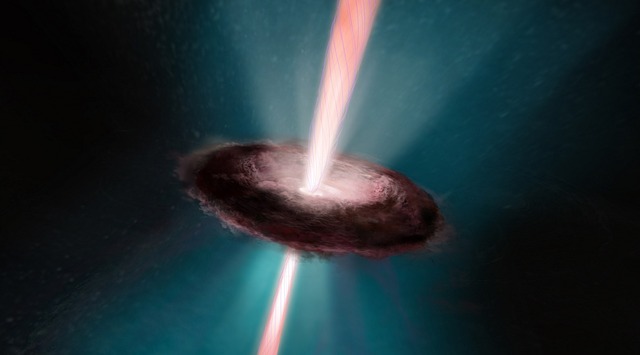
Einstein’s General Theory of Relativity made a lot of predictions that seemed impossibly absurd, yet they turned out to be frighteningly accurate. One of those predictions is the existence of black holes — that monstrosity of ultra-powerful nothingness from which even light cannot escape.
Almost every galaxy has its own black hole, and the bigger the galaxy, the more massive its black hole typically is. Most of the time, the black hole just sits there in the center of the galaxy. Occasionally, though, it draws in gas clouds and stars. When these materials get sucked in by the black hole’s strong gravitational pull, they heat up, then get blasted back out by magnetic fields and streams of hot plasma referred to as jets. These jets are spewed out at velocities near to, but never quite as fast as the speed of light. Because nothing is faster than the speed of light, right? Wrong.
50 million light years away in the constellation of Virgo lies Galaxy Messier 87 (M87 for short), formed from the merging of 2 galaxies in the Virgo cluster. In the center of M87 is its black hole, emitting jets of hot plasma shaped like a thin beam, and seemingly being blasted not just faster than the speed of light, but almost five times faster.
It was almost a century ago when astronomer Heber Curtis first discovered M87’s extraordinary beam of light. That was back in 1918, which means for him to be able to see that light, with the quality of the instruments at that time, the beam had to be an enormous one. Which it did turn out to be. In fact, the beam measured nearly 6,000 light years long.
Many years later, the Hubble Space Telescope monitored the development of M87’s beam for four straight years, from 1995 until 1999. In that period, astronomers noticed from the photos that the plasma appeared to be rippling outwards faster than what the black hole was emitting. Which means the plasma appeared to be moving faster than the speed of light.
After 13 more years of images, in 2013, the beam appeared to be moving in corkscrew-like spirals. And right now, if you look at it through a telescope, you’d see that it seems to be somewhat askew and angled to the right.
That’s less than 2 decades worth of development. Imagine what more can happen in the next 2 decades.
To be clear, M87 isn’t the only galaxy that’s exhibiting this strange phenomenon. It’s just that it happens to be the nearest one to us, which makes it relatively easier to study.
So far, scientists have yet to come up with a plausible explanation for the faster-than-the-speed-of-light-beam. They know that the flow of energy from black holes can start or stop the formation of stars. They have yet to figure out, however, how such outflows actually work, and how much energy is involved. With the information they could derive from M87’s jets, they might be able to form a clearer picture not just of how galaxies form, but maybe even the exact role that black holes play in these cosmic events.
Reference: New Scientist
- Bulenox: Get 45% to 91% OFF ... Use Discount Code: UNO
- Risk Our Money Not Yours | Get 50% to 90% OFF ... Use Discount Code: MMBVBKSM
Disclaimer: This page contains affiliate links. If you choose to make a purchase after clicking a link, we may receive a commission at no additional cost to you. Thank you for your support!




No laws have to be rewritten, its an illusion. Its not very well explained by new scientist, but it only appears to be traveling faster than light, it doesnt actually travel faster than light and breaks no laws what so ever.
The Russian astrophysicist Nikolai Kosyrev discovered that a long time ago. Einstein did not deny the possibility of something faster than the speed of light, only the possibility of travelling back in time.